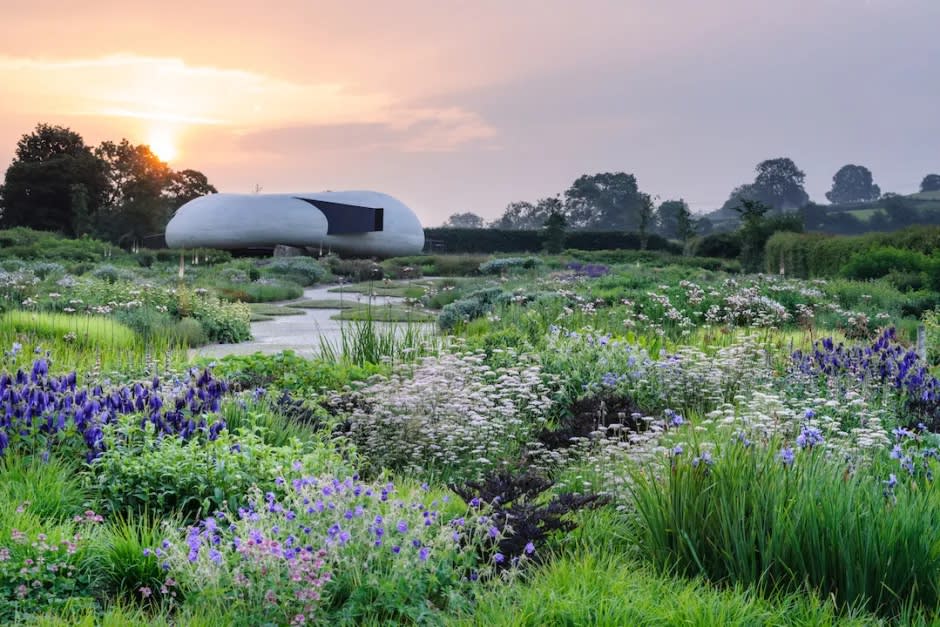Carbon Reporting And Setting A Science Based Target (SBTi) For Your Gallery
From wildfires in Greece to fatal floods in Germany and the deadly Pacific Northwest heatwave, there can be no doubt that we are squarely on the frontlines of the climate crisis. These extreme events and their human consequences are the backdrop to the latest report from the Intergovernmental Panel on Climate Change (2021).
Many people have described the IPCC report as alarming, sobering and doom-laden, and indeed there is much that should appal us in terms of decades of climate inaction. Yet there is still hope contained within: The report acknowledges while that the opportunity to limit global temperature rise to 1.5 degrees is slim, it is still scientifically, technically and economically possible. How can the artworld do its part to make a consequential impact in this window of opportunity?
As a member and patron of the Gallery Climate Coalition, Hauser & Wirth is making its 2019 carbon footprint available through the GCC website. This is the first step in the GCC’s mission to bring about a halving of carbon emissions across the art world by 2030. But what exactly is a 50 percent reduction in carbon emissions and how do we achieve this target?

Global carbon footprint of Hauser & Wirth 2019
-
These emissions for electricity, shipping and travel cover 14 Hauser & Wirth global locations. These include galleries in the US, UK, Switzerland, Spain and Hong Kong.
-
Environmental Resources Management (ERM) carried out carbon footprint reports for scope 1 and 2 carbon emissions for Hauser & Wirth for 2019 and our energy use as noted in the GCC calculator has been verified independently.
-
Hauser & Wirth have chosen to commit to disclose scope 1 and 2 Science Based Target (SBTi) from a baseline year of 2019 at 1,620 tCO2e. The target will be focused on reducing our absolute emissions to align with a 1.5-degree reduction pathway, as set out in the Paris Agreement and IPCC Special Report.
-
In this report, Hauser & Wirth’s scope 3 emissions include travel and shipping. In 2021, we are developing a program to understand our scope 3 emissions through carbon calculations and subsequent budgets for all exhibitions and fairs. A series of scope 3 workshops with staff has also taken place to identify where procurement can influence our supply chain.
We as an international gallery are taking responsibility for our commitment to the goals set by the Paris Climate Agreement of the United Nations through our enrollment in the Science Based Targets initiative (SBTi), which will help us measure, track and monitor our reductions. According to the World Resources Institute (WRI), the SBTi shows organisations how much and quickly to reduce their GHG emissions to prevent the worst impacts of climate change. With the GCC carbon calculator, we have been able to make a reasonable estimate of our overall carbon footprint (energy, flights and freight). Concurrently, we are working with Environmental Resources Management (ERM) to carry out carbon footprint reports and analysis to independently verify our calculations.
At Hauser & Wirth, working towards these ambitious targets means making fundamental changes to our business practices and assumptions. Through our connections with climate-action specialists like Haley Mellin (Art to Acres), Lucas Joppa (Chief Environmental Officer, Microsoft) and Danny Chivers (Environmental Writer and Carbon Footprinting Advisor for GCC), we know that to be part of the SBTi commitment, organisations must confirm that they will not use offsets or avoided emissions as progress toward achieving their targets. Significantly, these disclosures are available publicly on the SBTi website and will provide a benchmark against which all galleries and art organizations can measure their true dedication to an effort that requires comprehensive commitment.
How will we do this? Hauser & Wirth will disclose scope 1 and 2 emissions (energy and fuel) from a baseline year of 2019 at 1,620 tCO2e. The target will be focused on reducing our absolute emissions to align with a 1.5-degree reduction pathway. In real terms, this means a year-on-year absolute reduction in emissions of 68 tCO2e which is in line with the GCC’s reduction target of at least 50 percent by 2030. We will achieve this through multiple means: the sourcing of renewable energy, even in locations where it is not easily available through utility providers; transitioning to LED lighting; decarbonising our energy in locations where we can control sources and lobbying our landlords to introduce more green energy into the buildings in which we operate. We know that there is embodied carbon in any new location that we open and we are seeking to use our targets to ensure that these developments will be net Zero.
Based on the size of most organisations in our sector, the SBTi commitment does not include disclosable targets for scope 3 (flights and shipping), but that does not preclude us from setting a reduction target in this area anyway. For our larger scope 3 (flights and shipping) emissions, we are setting carbon budgets for all our fairs and exhibitions, starting with Art Basel 2021, initiating the measuring and tracking of all our reductions.
Together with many other galleries as we release our 2019 GCC carbon report in the countdown to COP26 in November, Hauser & Wirth recognizes that the next step beyond accounting for our emissions is setting a definitive, realistic pathway to reduction. As our industry discovers the ways in which it can take responsibility, the real work is galvanising ambition into radical solutions. In the coming months, we at Hauser & Wirth will begin to share our own solutions and actions through our communication channels, through events and through the GCC, striving to become leaders in our field at this critical moment.

